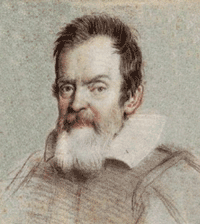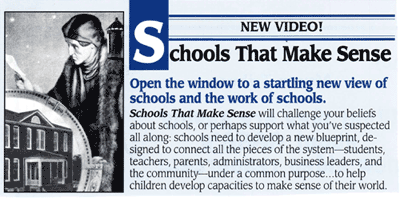Copernicus’ Curse and Galileo’s Pain
For years I’ve admired Copernicus, history’s most important paradigm-shifter. In fact I put him on the cover of the video I developed for AASA in 1995, and felt pleased when Meg Wheatley commented that it “gets people to start their thinking at a deeper level. So they don’t end up tinkering.”
At the time, I chose to ignore “the rest of his story” dealing with how hard it had been for his mathematical proof that the maps were not the territory to standup against the common sense view of a sun, stars and planets circling the earth that everyone could see every day. And I soon resonated with what I thought of as the Copernican Curse –having to live with a world that denied what he “knew” to be true because he had a theory to prove it.
 But today I find Galileo’s grief more familiar.
But today I find Galileo’s grief more familiar.
With his telescope as lens, he offered a direct way of seeing the truth of Copernicus’ theory.
And in words Brecht provides him, he bemoans:
“What has been seen, cannot be unseen.”
Over time, I’ve found out what “Cannot be unseen” really means when it becomes your default mental model – one that’s now embedded as fact not theory.
The good news was that as Alice’s Looking Glass became my natural way-of-seeing and understanding, it enabled me to ask “different questions,” and also to see, first why some schools “different answers” were working; and then, how many of those answers were interdependent and connected.
But, as I learned, those who could not “see” those sense-making connections had trouble understanding how these “answers” related to the “larger” (and inter-connected) problems they were dealing with.
That’s why if any of the ideas on this site evoke any of the “head-hurting” pain referred to in the Surgeon General’s Warning on the right side of the Home page, you may find comfort in knowing that you are in the good company of Copernicus and Galileo.
…But also will experience the discomforting awareness that we don’t have 400-500 years for the “truth” of the simple rules that we are suggesting drive education’s seeming-complexities to be accepted.
That’s why I’m hoping I can use this site to “share the pain” – and then together through our interaction we might think of ways to stop triaging its symptoms, and begin to address its root causes.
So in the postings that will follow, expect some “head-hurting” as we begin to explore the
• Quantum Paradox that leaders face as they try to address simultaneously the needs of all (the whole) and each (the parts) in their singular decisions.
• The difference between “Teachers” and the “Teaching Process.”
And particularly in terms of present attempts to — “in the end” — have a “Quality Teacher” in every classroom. Is it possible that a district can ensure a “Quality Teaching Process” in every classroom from which quality teachers can develop? (see also Teachers As Teaching: Person or Process?)
• The “Job”/”Role” paradox – in which a teacher who is being held accountable for doing his/her “job” cannot perform the “roles” that the system must have in every classroom. What happens when a non-systemic understanding of “job” requirements creates conditions that erode the time, trust and information a role requires? And how it can be addressed.
Posted: May 14th, 2009 under Meaningful Metaphors.


